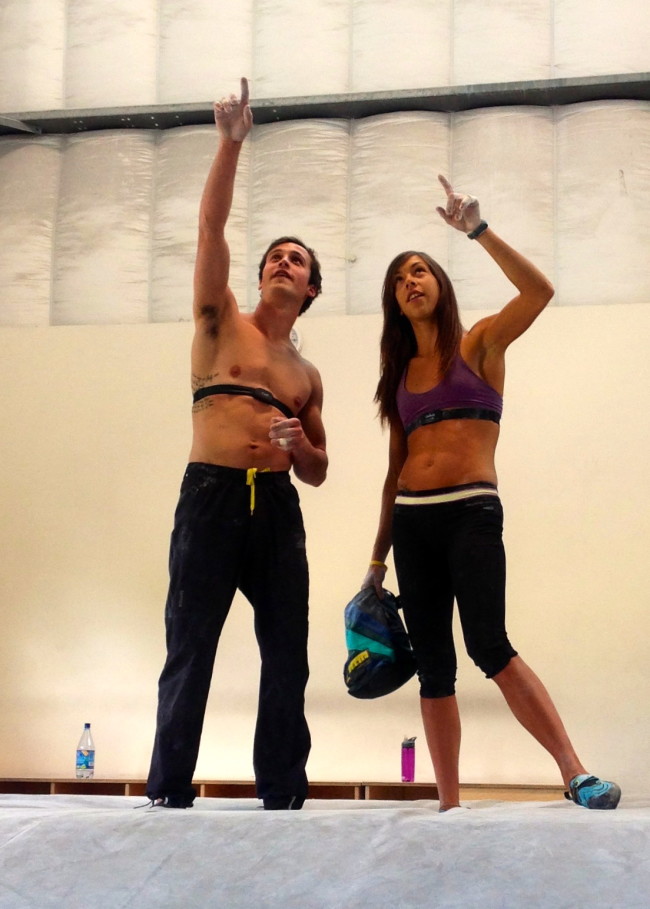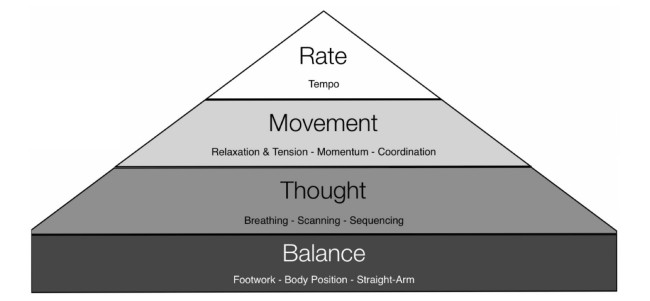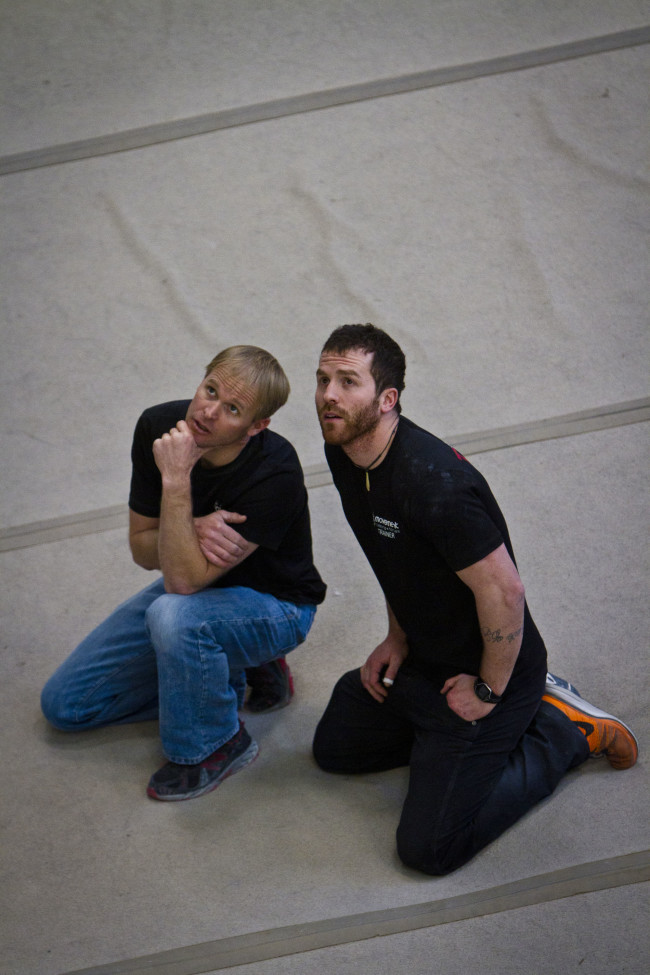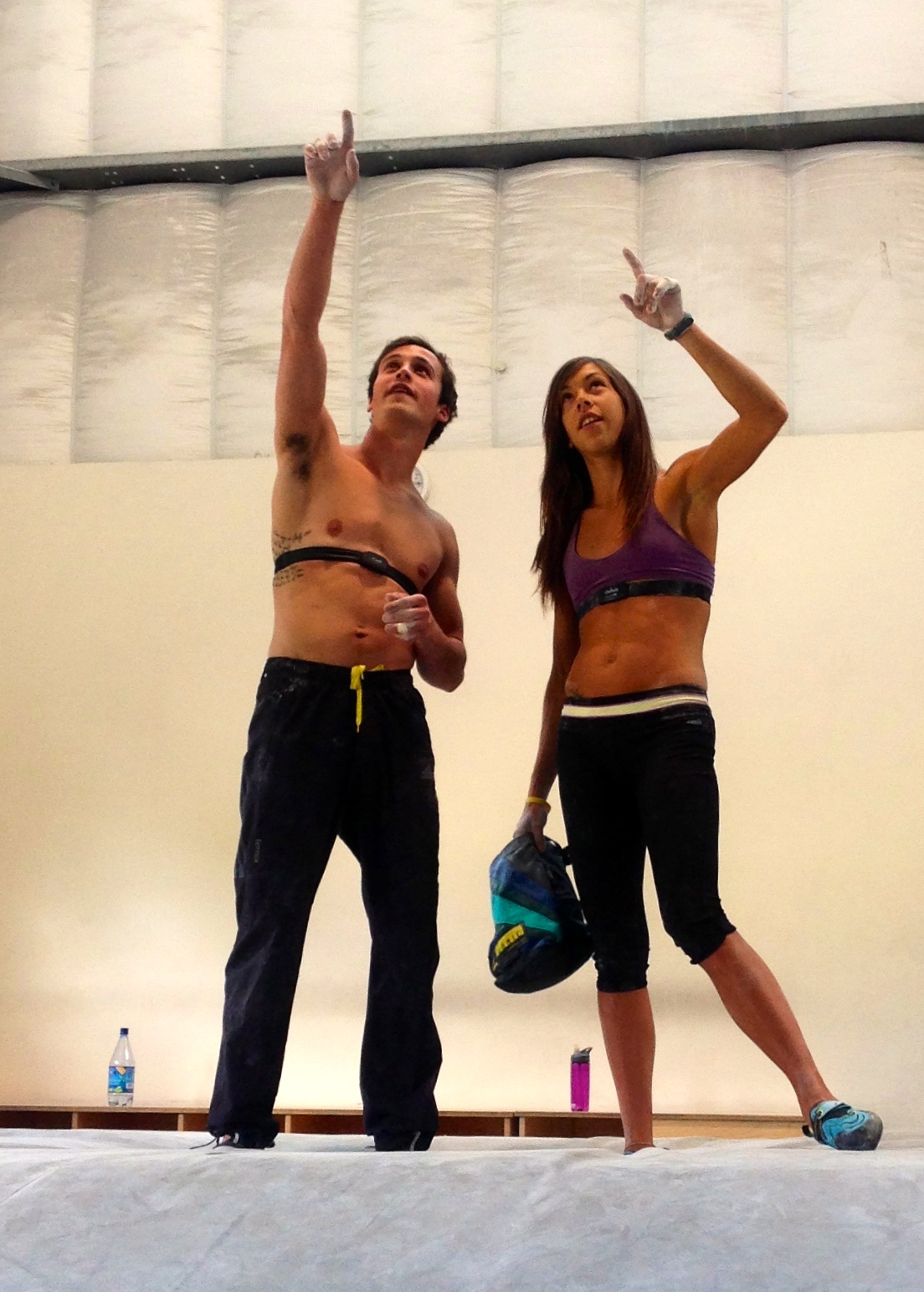
If you feel your climbing team could use a leg up on the competition then the use of a heart rate monitor might just be the thing. Though used widely in most other sports, HR monitors have not had a traditional place in climber’s training. But in Boulder, Colorado Justen Sjong, co-founder of the training company Team of 2, has been pioneering the use of heart rate monitors as a climbing training tool.
Sjong has been coaching since 1996 when he started a youth team at Cascade Crags in Everett, Washington. Today he is a go-to coach for top climbers trying to push into the next level. Most of his time is spent with adults and pros like North Face Athletes Daniel Woods, Emily Harrington and Matt Segal. Recently he helped top female climber Chelsea Rude take third place finish at SCS Open National Championships.
But youth competitors still seek Sjong out for additional training. “Now when I work with kids my time is spent on their specific needs and empowering them to make positive changes in their climbing. Most of the kids are still on a youth team and I encourage that because my services don’t provide the camaraderie that a youth team provides,” said Sjong.
Sjong along with this Team of 2 trainer Kris Peters are transforming climbers not only into better climbers but into better athletes. “Team of 2 gives athletes access to both a Coach and Trainer to determine the best strategy for them to improve. The Coach’s job is to improve a climber’s technical and mental skills. The Trainer’s job is to improve the strength and maintain balance in the climber’s body. It’s a one-two punch.” says Sjong.
CBJ asked Sjong to break down how he uses a heart rate monitor in his climber training. Here’s what he said:
The Heart of the Matter
If an athlete is climbing above 5.10 they have the opportunity to improve their training with a heart rate monitor. With the monitor the climber can figure out the heart rate above which they are vulnerable to making mistakes and where they lose the ability to maintain control. Knowing this range allows the climber to focus their training in that ‘Red Zone’.
The heart rate monitor is easy to use. The climber wears the monitor during a climb and identifies the heart rate where their technical skills fall apart. For instance, if a climber enters the ‘Red Zone’ at 150 Beats Pre Minute (BPM) then the trainer can push the athlete into the 140-160 BPM zone while focusing on improving their ability to maintain technique in that troublesome zone.
Maintaining Technique in Four Steps
As a coach I use the heart rate to focus on the climber’s skills, how their skills might break down on certain routes and help figure out what might help the athlete stay on the right course. Another way to put this is that when we climb our best we trust our intuition, even experience a state of ‘Flow’ or of being ‘In the Zone’. But after a few minor mistakes our conscious thought takes over and we lose the fluid aspect of unconscious thought. Our technique degenerates.
To stay in the flow Sjong teaches the climber to focus on four things: Balance, Thought, Movement and Rate. 
- Balance. The climber must find ‘Balance’ which is very different than stability. A quick way to confirm balance in the body is to release the lower hand. When a climber releases the lower hand with a relaxed core does the body shift much? Stability is when one releases the lower hand and the body doesn’t shift … but the core is tight to create that stability. When the climber is in balance he or she will use less energy and have time to think, which leads to the next step.
- Thought. Ideally one will want a relaxed breath so one can scan the available hands and feet. With that information the climber can create a logical plan of action.
- Movement. After the climber has a plan it’s time to move. To create flawless movement the athlete must act on instinct. The ability to regulate the climbers relaxation and tension is critical to have seamless momentum. But can the athlete maintain their coordination when tired? Elite athletes climb fluidly and move instinctively. Beginners also move through these same steps but it’s more conscious, more choppy.
- Rate. Finding the ideal tempo for the moves ahead. I prefer the term tempo over speed because most people think of speed as climbing fast and faster isn’t always ideal. Tempo is about finding the ideal pace for the current conditions. Balance – Thought – Movement. Repeat.
Example: Joe Climber is starting up a difficult climb. At first it’s easy but he fumbles the third clip. He reaches for the next hand hold but it’s actually down and right from where he reached. Joe makes the correction then hesitates on the next four handholds. He struggles with the fourth clip, then falls just before the fifth clip.
What does the Coach observe? When the climber makes a minor mistake like a clip it’s common for the eyes to become stern and very determined. The breath gets tight because the climber needs more stability for the clip. With a tight breath Joe Climber will begin to make minor mistakes that add up. Making mistakes when the climbing was easy crushed his confidence. He shifted away from intuition and into conscious thought. His coordination got worse, amplified by negative thought. Basically his technique fell apart.
What should the climber have done? The sooner he became aware of a minor mistake the easier it is to correct course. I use the metaphor of hitting the ‘Reset Button’. The Reset Button is more challenging to hit when under stress.
How to Hit the Re-Set Button
- Fix your eyes on a single object to calm the mind and body.
- Listen to your relaxing breath.
- Feel the muscles relax in your body.
- Refocus your attention to the next move.

Every athlete has a heart rate where they are vulnerable to negative emotion during a stressful performance. I get athletes to train in that zone so they struggle. Those moments of struggle gives them opportunity to correct course. The more success they have in correcting course the more they gain confidence. Athletes that know they can lose their magic BUT get it back are stronger for it.
As a coach it’s wrong to think athletes won’t ever make mistakes and lose confidence. We must help them gain the tools to find their magic again.
Final Words on Coaching
“Most climbers love having their own brand of climbing and style. I like to honor that. I don’t want to over-coach people or homogenize climbers. Success for me is when an athlete has a better understanding of how their technical and mental skills affect their brand of climbing, and when athletes are excited because they’ve reached a goal.
“It is rewarding to see people reach out for help and embrace change in their life. That takes courage.”
Read more about Justen Sjong’s training methods at:

Climbing Business Journal is an independent news outlet dedicated to covering the indoor climbing industry. Here you will find the latest coverage of climbing industry news, gym developments, industry best practices, risk management, climbing competitions, youth coaching and routesetting. Have an article idea? CBJ loves to hear from readers like you!







